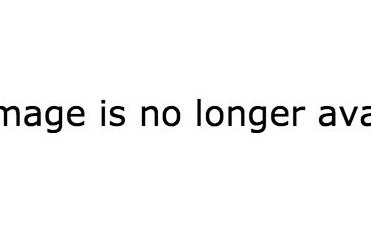
1. Nearly all of the movie was filmed in Ireland, apart from a few scenes that featured William Wallace's village, which were filmed in Glen Nevis.
2. After the set was dismantled, the parking lot the filmmakers built remained. Today, it's known as the Braveheart Car Park.
3. "Braveheart" was a nickname given to Robert the Bruce, not William Wallace.
4. Legend has it that King Robert's close friend Sir James Douglas took his heart with him into battle after he died, crying: “Lead on brave heart, I'll follow."
5. Many Scots were offended by the film's portrayal of Robert the Bruce as Wallace's betrayer; he's considered just as much of a national hero as Wallace.
6. In 2009, Mel Gibson told a Daily Mail interviewer: "We kind of shifted the balance a bit because somebody's got to be the good guy and somebody the bad guy, and every story has its own point of view."
7. The Battle of Stirling Bridge sequence was filmed over six weeks on the bridge-free Curragh Plain in County Kildare.
8. When asked why he decided to leave the bridge out of the Battle of Stirling Bridge, Gibson answered that "the bridge got in the way".
9. William Wallace’s famous “Freedom” speech was heavily inspired by King Henry’s “St. Crispin’s Day Speech” from the Shakespeare play Henry V.
10. Oh, and there's no mention, in history or legend, of the Scots "mooning" the English at the Battle of Stirling Bridge. Sorry.

11. Gibson defended the mooning scene, saying that the movie needed some comic relief. In 1995, he told the Dallas Observer: "If this movie didn't have some funny bits, it'd be fucking unbearable."
12. American scriptwriter Randall Wallace was inspired to write the film after learning about William Wallace during a holiday in Edinburgh.
13. Braveheart was Wallace's first produced screenplay. Before that, he did odd jobs. He'd been a martial arts instructor, and a singer/songwriter.
14. Wallace opted to do specific historical research after he completed his screenplay rather than before, because he wanted to capture the "drama of the story" first and input historical details later.
15. Most of the horses used in the battle scenes were fake, weighed 200 pounds, and were fuelled by nitrogen cylinders that propelled them at 30 miles per hour.
16. After shooting the scenes, Gibson was investigated by an animal welfare organisation who were convinced that the fake horses used were real.
17. The blue body paint (woad) worn by the Scottish warriors in the film hadn't been used in Scotland since Roman times, around 800 years before the events detailed in the movie. It's a complete anachronism.
18. Gibson wanted the St. Andrew's Cross to be painted on his face, which is a contemporary Scottish flag that hadn't been conceived of in the 1300s. The make up designer persuaded him to go for the now iconic half-face design instead.

19. The production used around 1500 reserve soldiers from the Irish territorial army as extras during the battle scenes.
20. Around 40 of Wallace's descendants were used in the scenes as well. They tended to stand around Gibson during the opening shots of battles.
21. Extras earned just $300 per week and regularly worked 14-hour days.
22. The Irish reservists played both Scottish and English forces. They simply changed costumes depending on the angles Gibson wanted to shoot.
23. The extras also kept forgetting to remove their sunglasses and wristwatches, which meant the battle had to be re-shot several times.
24. Facilities were poor and when the reservists failed to get the weekend off as promised, their Colonel fell out with Gibson and marched them off set.
25. Gibson was going to sit out the full frontal kilt lift scene, but the reservists insisted he join them and flash his dick too. If they had to do it, so did he.
26. Scottish warriors wouldn't have worn kilts in the 1300s: That didn't happen for another four centuries. Historian Sharon L. Krossa has likened it to "a film about colonial America showing the men wearing 20th-century business suits."

27. The film portrays Wallace as a scruffy peasant. In reality, he came from Renfrewshire and was the privileged son of a noble landowner.
28. Also, Wallace’s wife was called Marion, not Murron. Gibson and Randall Wallace changed the name because they wanted to avoid the audience confusing her with Maid Marian from Robin Hood.
29. Murron isn't a real name. In fact, it was invented by Randall Wallace. Nevertheless, people have since named their daughters Murron.
30. Murron originally gave William a rose at his father's burial; however, a Scot who read the script pointed out that the rose was a traditional symbol of England and that a thistle would be more appropriate.
31. William Wallace's disembowelment was filmed in graphic detail, but was cut for the release to avoid an NC-17 rating from the MPAA. Even so, the final version was rated R for "brutal medieval warfare".
32. Mel Gibson accidentally hanged himself for a moment during his death scene, blacked out, and had to be cut down by the crew. Gibson says, "I remember waking up with all these people standing over me."
33. Not long before he's executed, the movie version of Wallace says: "Every man dies; not every man really lives". This line is actually from a poem written by a 19th- century American poet called William Ross Wallace (no relation).

34. The film's accountant makes a cameo as the English commander at the end who mocks Robert The Bruce, saying to his soldiers: "I hope you washed your ass this morning. It's about to be kissed by a king."
35. Mel Gibson initially didn't want to play William Wallace, but was forced to take on the role as Paramount only agreed to finance the film if he was the lead.
36. He reportedly felt he was "at least a decade too old for the part" (he was 38; Wallace was in his twenties when he died).
37. The instruments heard on the soundtrack are largely Uilleann pipes, a smaller, traditionally Irish version of bagpipes, rather than the Great Highland Bagpipe.
38. Braveheart was named the worst film to ever win an Oscar by Empire magazine in 2005.
39. A 13-foot sandstone sculpture of Gibson as Wallace was placed in the car park of Stirling's Wallace Monument in 1997. After being defaced several times, the statue was returned to its sculptor, Tom Church, in 2009.

40. Gibson was apparently a real prankster on set. His so-called "pranks" included flashing his penis at Sophie Marceau, who played Princess Isabella.
41. Marceau told Entertainment Weekly that he claimed he did it to "lighten the mood".
42. And when Braveheart and Apollo 13 were both nominated for a Best Picture Oscar, he pranked Apollo 13 director Ron Howard by mocking up a poster that claimed Braveheart won an Oscar for "Best Moon Shot". The accompanying picture was a still of the Scottish army mooning the English.
43. One of the film's tired extras mistook one of Mel Gibson's children for an errand boy, and asked him to fetch a cup of tea. Gibson was within earshot, and nodded and whispered to his son, "Go get it."
44. The sacking of York scene didn't happen in reality. Wallace did invade northern England, but he never got as far south as York.
45. And finally, the iconic: "They can take our lives, but you they will never take our freedom!" line was made up by Randall Wallace as well.
That isn't to say it isn't awesome though:


